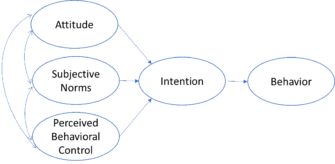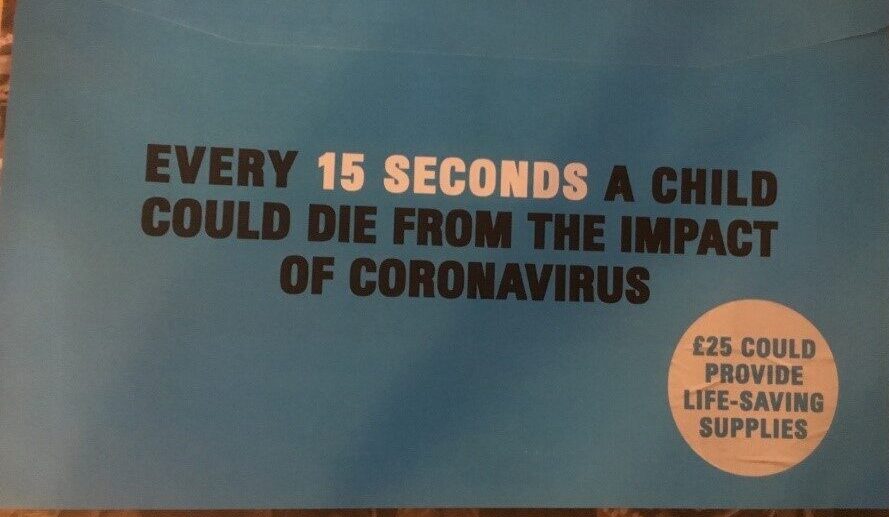The “Intention to Give” Giving Gap
There is an entire field of study, decades old, focused on the relationship between intention to do something and doing it – intended behavior vs. actual behavior.
This is far more involved and practical than the too simplistic and quite misleading adage that ‘people don’t do what they say’. In fact, the intention to do something is a great predictor of actually doing it.
But, there is a gap to be sure. And far more importantly for marketers and fundraisers is knowing what causes and influences the formation of intent in the first place.
One of the main, seminal theories in this field is the Theory of Planned Behavior, known as TPB because any theory worth its salt has to have an acronym.
This model has been modified over the years, poked, prodded and critiqued but it still holds up pretty well in providing some answers on how we can help positively create intent and close the gap between “intent to do” and “actually do” .
The Simple Version
Three of the causal levers of Intention are:
- Attitude – how do I think and feel about the behavior itself (e.g. Donating is a good thing) and the outcomes of the behavior (I like how I feel or expect to feel after giving; People are helped and that is good; the charity is better off and that is good.)
- Subjective Norms: refers to the belief about whether most people approve or disapprove of the behavior. It relates to a person’s beliefs about whether peers and people of importance to the person think he or she should engage in the behavior.
- Perceived Behavioral Control: This gets to a cornerstone of another foundational theory of “why” – Self Determination Theory or Motivation Theory is my mental shorthand for it. Lots of parts to this but in a nutshell, if the decision to give is intrinsic and feels volitional then it creates far more (positive) intention. If I feel coerced or guilted, far less (positive) intention.

There have been nearly countless experiments examining the relative influence of these three. Most of those findings tell us that,
- Marketing on Attitude is a better way to reduce the Intention to Give gap. Said differently, if my intention is formed more by my feelings about giving and the outcomes of giving than subjective norms, I’m more likely to act on my intention and give.
All the behavioral scientist wanna-be’s out there should pay careful attention to this as social proof is a commonly cited ‘nudge’ for getting people to act positively. However, all the evidence shows it’s a mixed bag where success is concerned. These subjective norm findings are only part of the reason why a person acts. It isn’t as important an influencer as other factors. This isn’t to suggest social proof is bogus, it isn’t. It’s just that applying it requires digging deeper, otherwise you are better off not using it.
Either way, your fundraising is far better off, for example, featuring a donor story sharing attitudes about giving (it’s a good thing) and the outcomes – (e.g. people are helped, donor feels good about decision).
Speaking of digging deeper, this is a fuller version of the model per DonorVoice and our work (and that of other academics). This isn’t fully reflective of all the causal paths. But, here are a few things worth noting.
- Moral norms: these are often in play with behaviors that the person deems to be morally right (giving would often be included). Be aware that not all people think all giving in every situation is moral, in fact, in some instances two people will be polar opposites – one thinking the giving is moral, the other believing it be immoral. In either case, this internal locus often trumps everything else. Think of this as either in-market or not in-market where some causes are concerned – e.g. atheists won’t give to religious groups.
- Personality and Identity: These are more formative, innate parts of self. As such, they’ll often serve the basis for all the attitude and norm judgements.
- Past experience: the giving experience either delivers on expectations or it doesn’t. Poor 1st year retention rates bolster the argument that giving experience usually fails to deliver on expectations. Success or failure to deliver on expectations has a major influence on repeating the behavior.

Putting It All Together–An Example
Let’s think about all this in examining the outer envelope below.
 .
.
Pros
- It prioritizes a moral norm – children dying is immoral
- It’s informational on a scale that is easy to process – e.g. every 15 seconds, 1 child.
Cons
- Invoking a moral norm, if done in a way that is guilt inducing is losing the battle and the war. The message might be suppressing initial giving and any chance of repeat giving.
- The attitude framing is about feeling bad for not doing the helping behavior. This is not the same as feeling good about the helping (e.g. the life saving supplies), a point that is literally minimized and not the focal point.
This pro/con list tied to theory and evidence can/should form the basis for testing. Importantly, the testing evaluation should include 2nd gift conversion since the initial giving is not always what it seems – i.e. ‘bad’ giving that was motivated by external forces.
But, this pro/con list is missing the real constructive critique and opportunity by limiting ourselves to what is there (limited horizon) versus what could or should be (new horizons).
Why not also consider Identity and Personality as part of the “idea” matrix for testing?
It is very doable to aim a Parent Identity message at scale to Parents using 3rd party data and talk to them very differently than non-Parents. Same for Globalists (another Identity group often at play with International Relief giving). Further, it is very doable to divide the Parent audience into Agreeable and Conscientious personality subgroups using 3rd party data as proxy.
Why send this same OE and package to everyone? You shouldn’t, because it is the antithesis of donor-driven or donor-centric.
There is no such thing as being donor-centric until we stop treating everyone the same.
Fortunately, if one builds a fundraising operation around the science and theory of the “why” of behavior it turns out people are very predictably–and more productively– different. They’re just not different in the ways 99% of our sector’s ‘segmentation’ is currently done.
Kevin



Thank you for this. I’m a fan of the Transtheoretical Model of Change https://tinyurl.com/y6r363q9 when wanting people to change behavior. In this model, people need to move from precontemplation (I never thought about this) to contemplation (I’m thinking about it and weighing the cons, early stage, and pros, later stage) moving me to action (one time) to maintenance (keep doing). In between contemplation to action is preparation, I need to learn how to do it – develop the skills (why that DR copy about write your check, put it in the self-addressed envelope, need a stamp not need a stamp, etc.)
Both of these work well together.
Best, Gayle